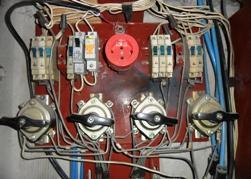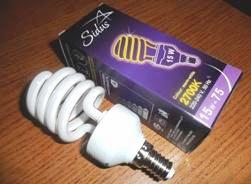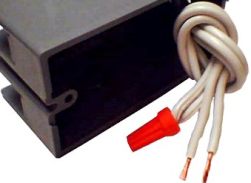Temperature sensors. Part one. A bit of theory and history
 Before you start the story about temperature sensors, you should understand what temperature is in terms of physics. Why does the human body feel a change in temperature, why we say that today it’s warm or just hot, and the next day it’s cool, or even cold.
Before you start the story about temperature sensors, you should understand what temperature is in terms of physics. Why does the human body feel a change in temperature, why we say that today it’s warm or just hot, and the next day it’s cool, or even cold.
The term temperature comes from the Latin word temperature, which in translation means normal condition or proper displacement. As a physical quantity, temperature characterizes the internal energy of a substance, the degree of mobility of molecules, the kinetic energy of particles in a state of thermodynamic equilibrium. An example is air, whose molecules and atoms move randomly. When the speed of movement of these particles increases, they say that the air temperature is high ...
RCD in two-wire: to put or not to put?
 Electrical engineering is an exact science and here, unlike such ephemeral areas of human activity as, for example, design, there are clearly documented norms and rules (PUE, GOSTs, instructions), and not just “like” or “don't like”. Yes, PUE is “the bible of an electrician” and the formidable phrase “read in PUE” speaks of the importance, pumpability and great seriousness of those who said it.
Electrical engineering is an exact science and here, unlike such ephemeral areas of human activity as, for example, design, there are clearly documented norms and rules (PUE, GOSTs, instructions), and not just “like” or “don't like”. Yes, PUE is “the bible of an electrician” and the formidable phrase “read in PUE” speaks of the importance, pumpability and great seriousness of those who said it.
But it turns out in life is always much more complicated everything is arranged than it is written even in the wisest books and these books can be interpreted in different ways. Particularly heated discussions among electricians in electrical forums raise questions related to the grounding of electrical installations and the installation of residual current devices (RCDs). It so happened that in our time in everyday life there are simultaneously two grounding systems TN-C and TN-C-S ...
Ten Frequently Asked Questions About Energy Saving Lamps
 Question: In which case is it economically viable to use energy-saving lamps?
Question: In which case is it economically viable to use energy-saving lamps?
The average life of an incandescent lamp is 1000 hours, and that of an energy-saving lamp (depending on type and manufacturer) is 10,000 hours, and it is five times more economical.
Energy-saving light bulbs are the smart choice for luminaires that work for at least three hours a day. In this case, by reducing the cost of paying for electricity, an energy-saving lamp will pay off in about 3 years. And since all types of energy-saving bulbs live longer than traditional incandescent bulbs, then after the bulb pays off, you begin to "earn" money to save electricity.
Question: How are compact fluorescent lamps arranged and what are their advantages over incandescent lamps? ...
Voltage regulator for smooth regulation of power on the load
 To begin with, what is a voltage regulator and where did it come from? The regulator described in the article “How to properly manage warm floors?” Is considered. There I told how to use it to control warm floors. In this article, I propose to get inside this device, see what it consists of, how to properly connect the load to it.
To begin with, what is a voltage regulator and where did it come from? The regulator described in the article “How to properly manage warm floors?” Is considered. There I told how to use it to control warm floors. In this article, I propose to get inside this device, see what it consists of, how to properly connect the load to it.
So, the voltage regulator is a universal device designed for use in a wide range of areas: for automation and control systems for lighting, ventilation, indoor climate, for integration into smart home systems, for smooth starting of asynchronous and synchronous motors and other tasks where there are the need for smooth regulation of power at the load. Structurally, the voltage regulator has a modular design ...
How to manage underfloor heating?
 The typical designs of our residential buildings make residents think about the heat arrangement of their home on their own.Poor central heating, which is not enough in winter to heat a standard room, forces us to go for additional heating systems.
The typical designs of our residential buildings make residents think about the heat arrangement of their home on their own.Poor central heating, which is not enough in winter to heat a standard room, forces us to go for additional heating systems.
There are quite a lot of varieties of underfloor heating systems on the market, all of them have one drawback - the lack of a soft start, that is, an electrical load is added due to the closure of the relay coils, and, as a result, huge starting currents, voltage sagging. From such currents, the wiring wears out faster and, as a result, a fire is likely.
For modern warm floors, a control module is offered that monitors the status of the system and adjusts the floor temperature. Very convenient technology, which is also not without a drawback ...
Protection against leakage currents: RCD and difavtomat
 According to the current rules for the installation of electrical installations, the wiring of rooms with increased danger must be equipped with protection against leakage currents. In a residential apartment, a room with increased danger is considered to be a bathroom.
According to the current rules for the installation of electrical installations, the wiring of rooms with increased danger must be equipped with protection against leakage currents. In a residential apartment, a room with increased danger is considered to be a bathroom.
Often, such a room is considered a kitchen. Both there and there may be a higher air temperature, tightness of space and high relative humidity. These factors lead to the fact that the insulation of wires and electrical equipment wears out faster, and the contact voltage increases to deadly values.
In order to eliminate this danger, protection against leakage currents is established, which is usually implemented on the basis of a residual current device (RCD) or differential circuit breaker ...
On the origin of the terms "anchor" and "rotor"
 The electrical term “anchor” is much older than the word electrical engineer. In the era of great geographical discoveries and the development of navigation in the oceans, there was an urgent need for magnetic compasses, the main part of which was the magnetic needle. These arrows were made of iron and magnetized by natural magnets. There were simply no others.
The electrical term “anchor” is much older than the word electrical engineer. In the era of great geographical discoveries and the development of navigation in the oceans, there was an urgent need for magnetic compasses, the main part of which was the magnetic needle. These arrows were made of iron and magnetized by natural magnets. There were simply no others.
Good magnetization also required good magnets. To enhance the action of natural magnets, they were reinforced with iron, attaching it to the stone using non-magnetic frames made of copper, silver and even gold.
Magnets were expensive. The magnet set also included a removable iron block, which “stuck” to the poles of the magnet. This bar had on one side a ring, hook or decorative copy of the sea anchor ...
PPE caps insulating for twisting wires

The connection of the conductors of wires of any electrical wiring should be carried out only with the help of certified clamps, simple twisting, even with the use of electrical tape, are not allowed. When it comes to household wiring, the caps insulating caps of PPE are very often used as such clamps.
The main reason for their mass distribution is ease of use. What are they like?
The PPE cap is, oddly enough, really a cap made of plastic compound that does not support combustion. Inside this cap is a conical metal spring. When the PPE is twisted with effort, the coil of the spring moves apart and compresses the conductors of the wires, and the plastic shell of the cap provides electrical insulation, fire protection ...
